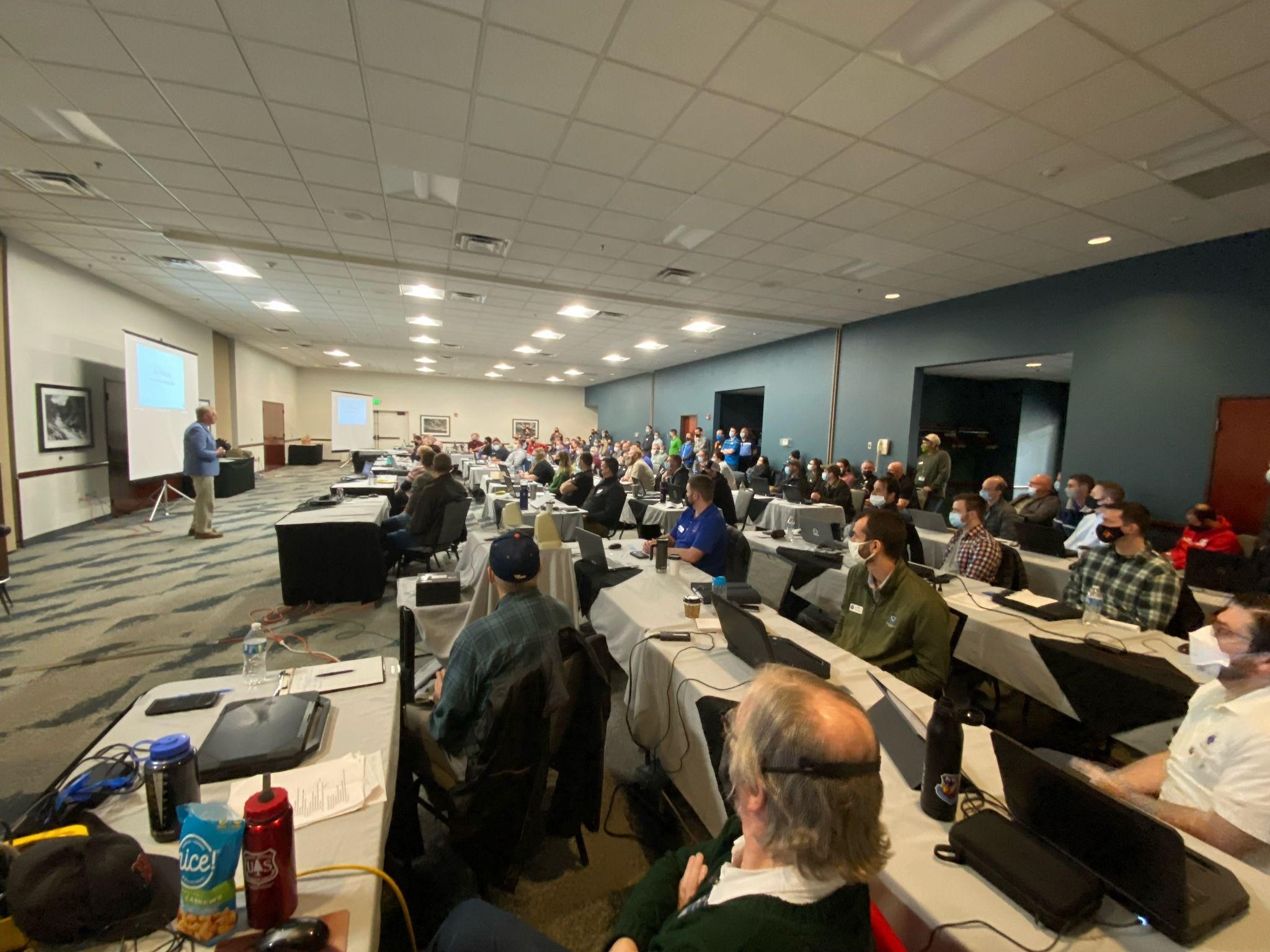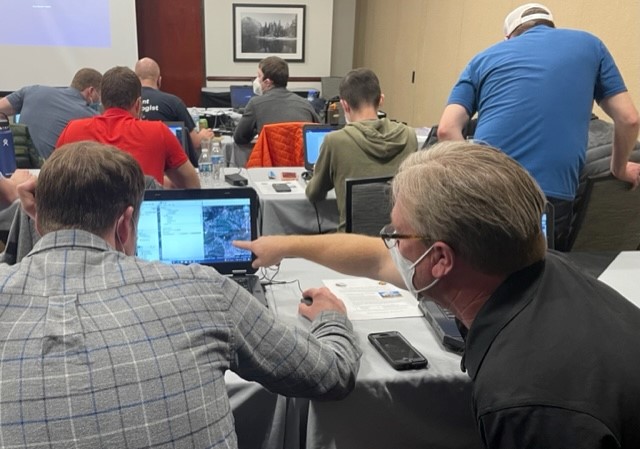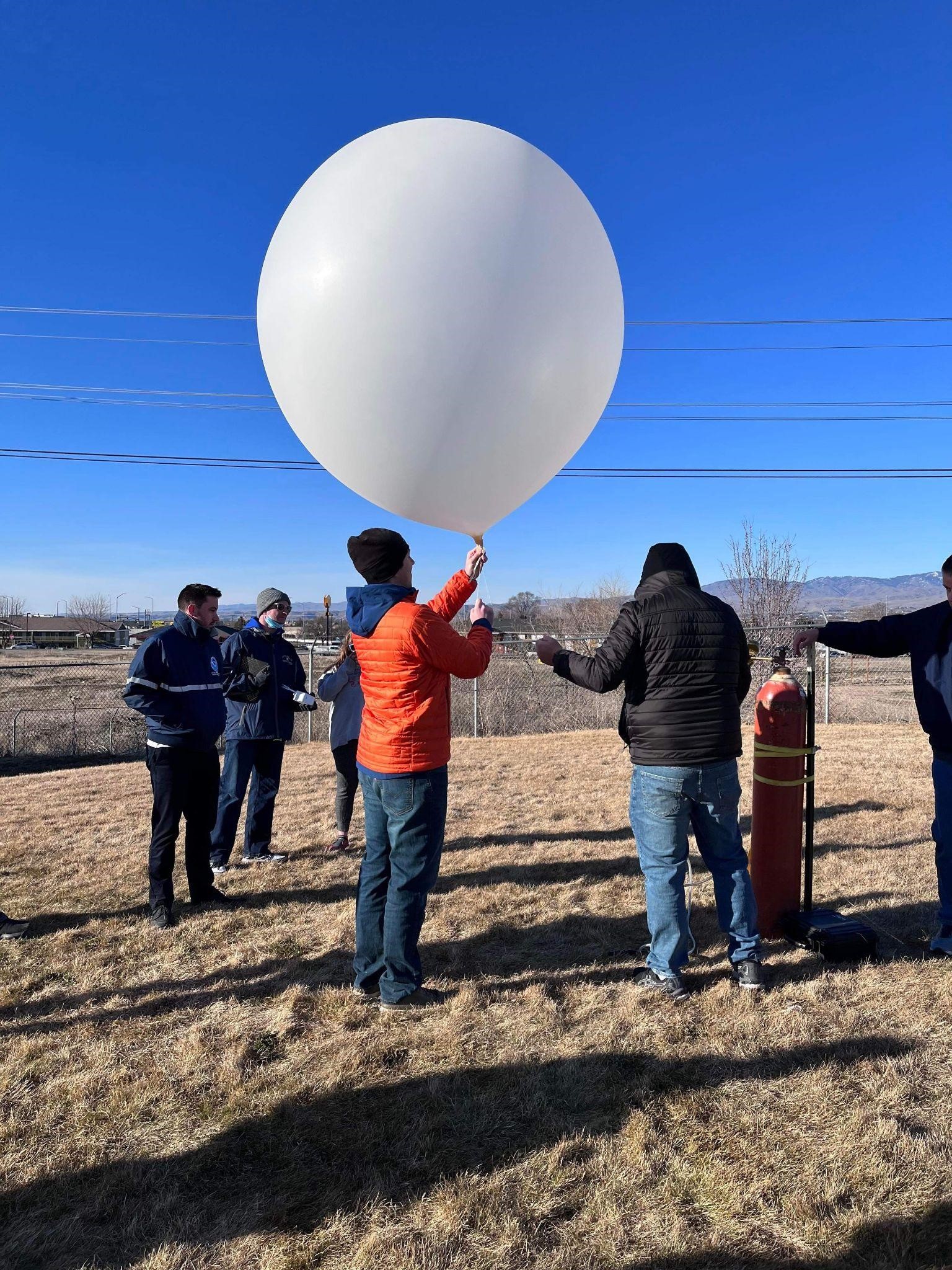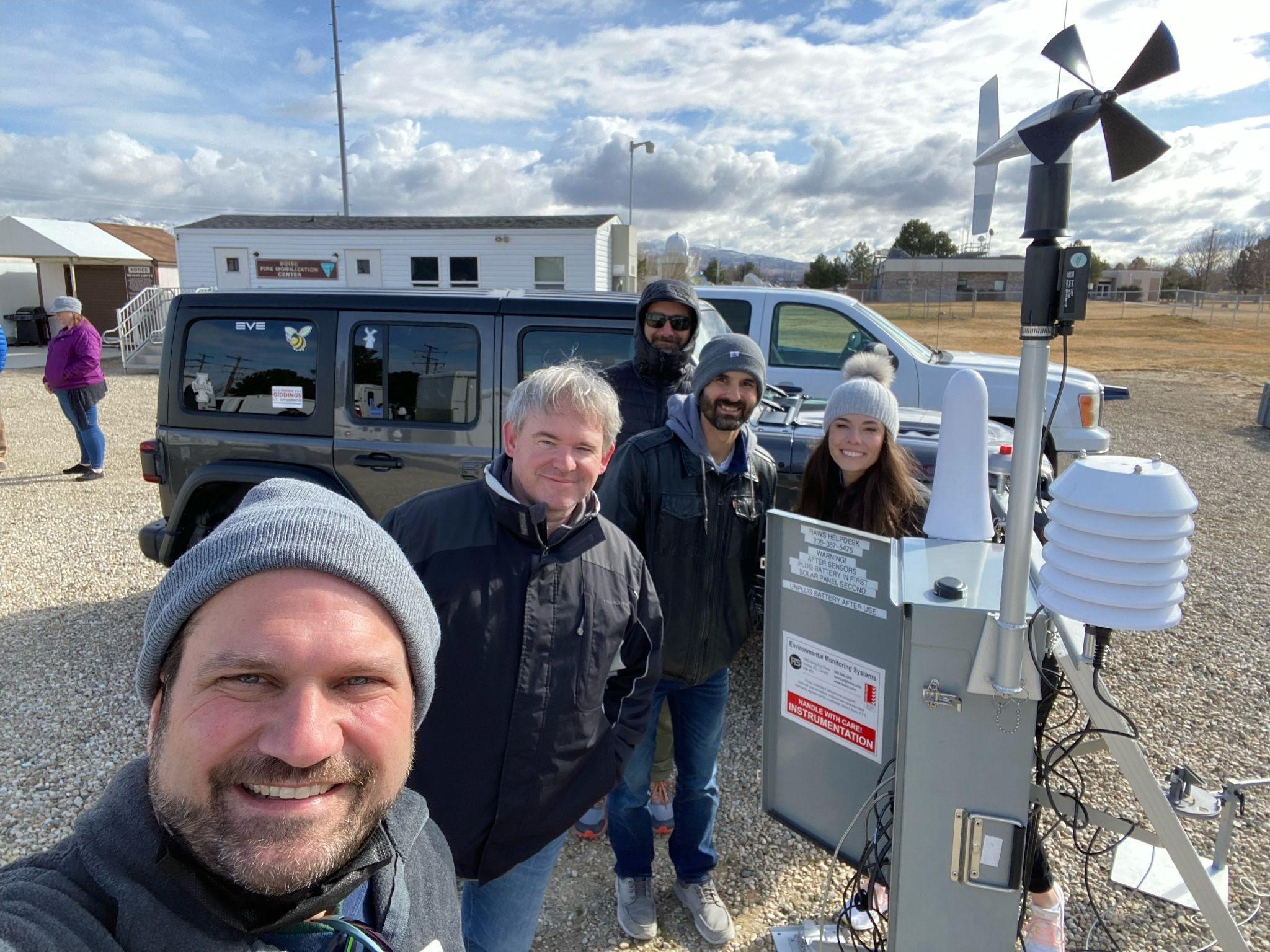March 16, 2022 - Weather is one of the most important determinants of how easily a wildfire starts, how dangerous it is, how fast it spreads and where it goes. That’s why meteorologists at the National Weather Service (NWS) play an important role in the nation’s firefighting efforts. NWS Incident Meteorologists (IMETs) are key members of wildfire incident command teams. Working alongside fire managers, IMETs provide weather forecasts and meteorological support to help them fight and control wildfires.
More than 100 IMETs and trainees gathered in Boise, Idaho, last week to complete specialized, intensive fire weather training to sharpen skills and ensure IMET readiness. Understanding how a fire reacts to certain weather, fuel, and topographic conditions and forecasting fire weather in complex mountain terrain are key goals of the training program.
 |
 |
| Left: IMETs attend training in preparation for being deployed to a wildfire. Right: IMETs working on Wind Ninja, a computer program used to model wind for wildland fire support. | |
Over the week-long training, IMETs practiced launching weather balloons and setting up remote weather stations, both used to gather weather observations. They participated in simulated exercises to develop spot weather forecasts and delivered fire weather briefings. They were trained on interpreting wildfire hotspots using GOES satellite imagery, reading computer models that predict the height and movement of wildfire smoke and in critical incident stress due to the physically and mentally demanding deployments. Trainees complete more than 225 hours of fire weather training and on-the-job training before becoming certified.
 |
 |
Once ordered to deploy to a wildfire, IMETs pack their equipment – cell phone, laptop, printer, handheld weather meter and portable upper air kit – then travel to the front lines to provide critical data about the weather so decision makers can map out the safest possible tactics for firefighters. At incident command, IMETs are outfitted with the same emergency equipment carried by fire crews: fire-resistant clothes and boots, a portable fire shelter, personal protective equipment, and first aid kits.
Last year, the IMETs completed a record 217 deployments to wildfire incident commands. On average, an IMET was deployed to three fires for a total of 36 days in 2021. These fire weather experts are based at NWS weather forecast offices throughout the country, and their operations are managed by NWS staff located at the National Interagency Fire Center in Boise, Idaho.
Forecasting for a wildfire is different from general weather forecasting. Wind, humidity and temperature near fires have a significant effect on fire intensity and firefighting tactics. Large fires can create their own weather, such as firestorms that produce dry lightning or send embers far from the site. Weather fronts can change wind speed and direction while dry thunderstorms can cause downbursts, erratic wind conditions and lightning that can cause additional fires. Operational fire management teams rely on input from IMETs and regular briefings to help plan where to place firefighters and how to fight the fires.
Due in part to the impacts of climate change, there is no longer an official “fire weather season,” as wildfires now occur year-round in the United States, burning more intensely and scorching more land than in years past. As a result, demand for IMET expertise has increased. The ongoing drought in the western U.S. will contribute to a busy fire year, and NOAA is ready to support firefighting efforts with a highly trained cadre of specialized meteorologists.
|
Resources: |
 |
| National Weather Service celebrates female IMETs on International Womens Day, March 8, 2022. | |
National Weather Service Incident Meteorologists at the 2022 Continuity of Excellence Exercise in Boise, Idaho.